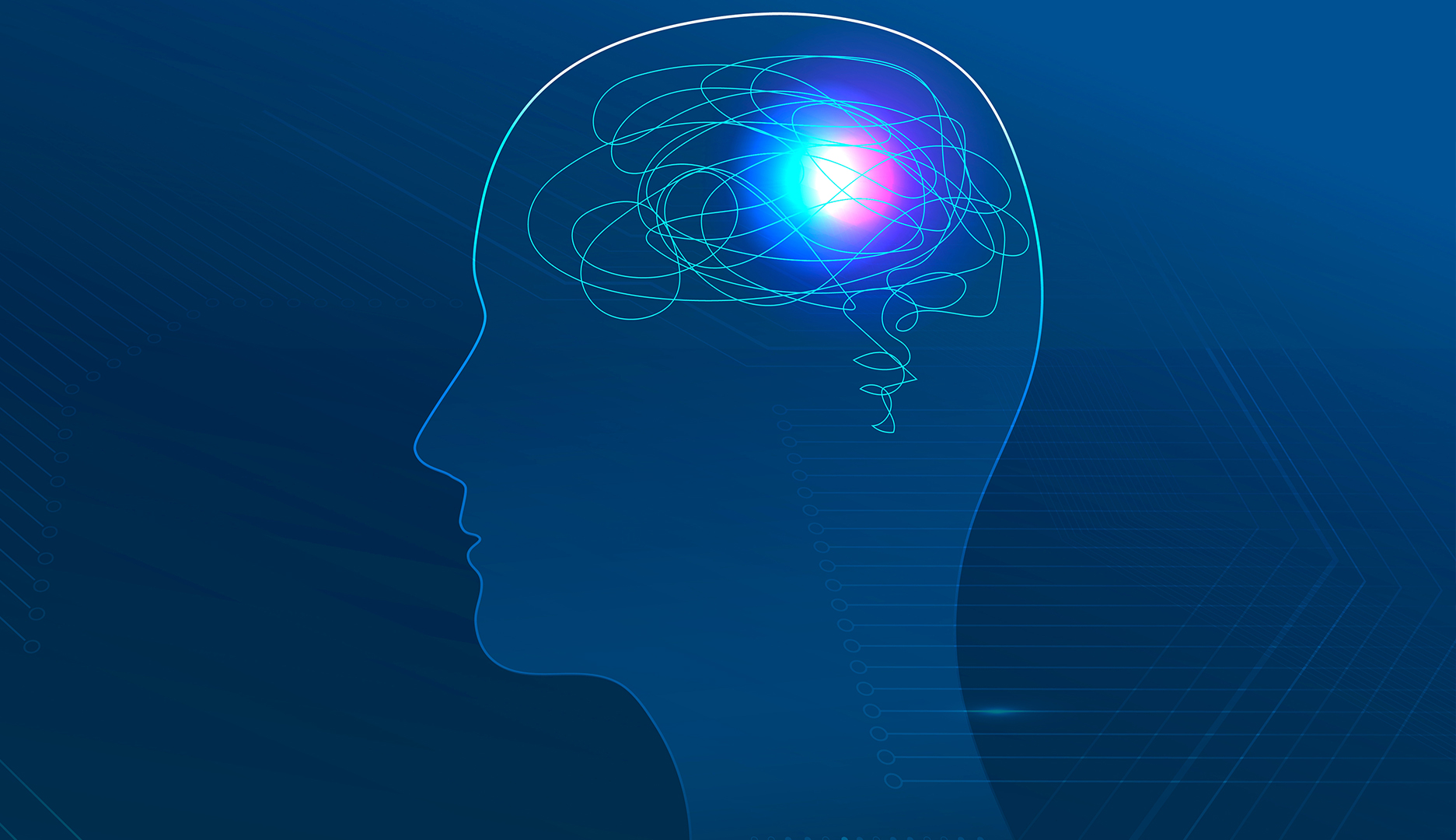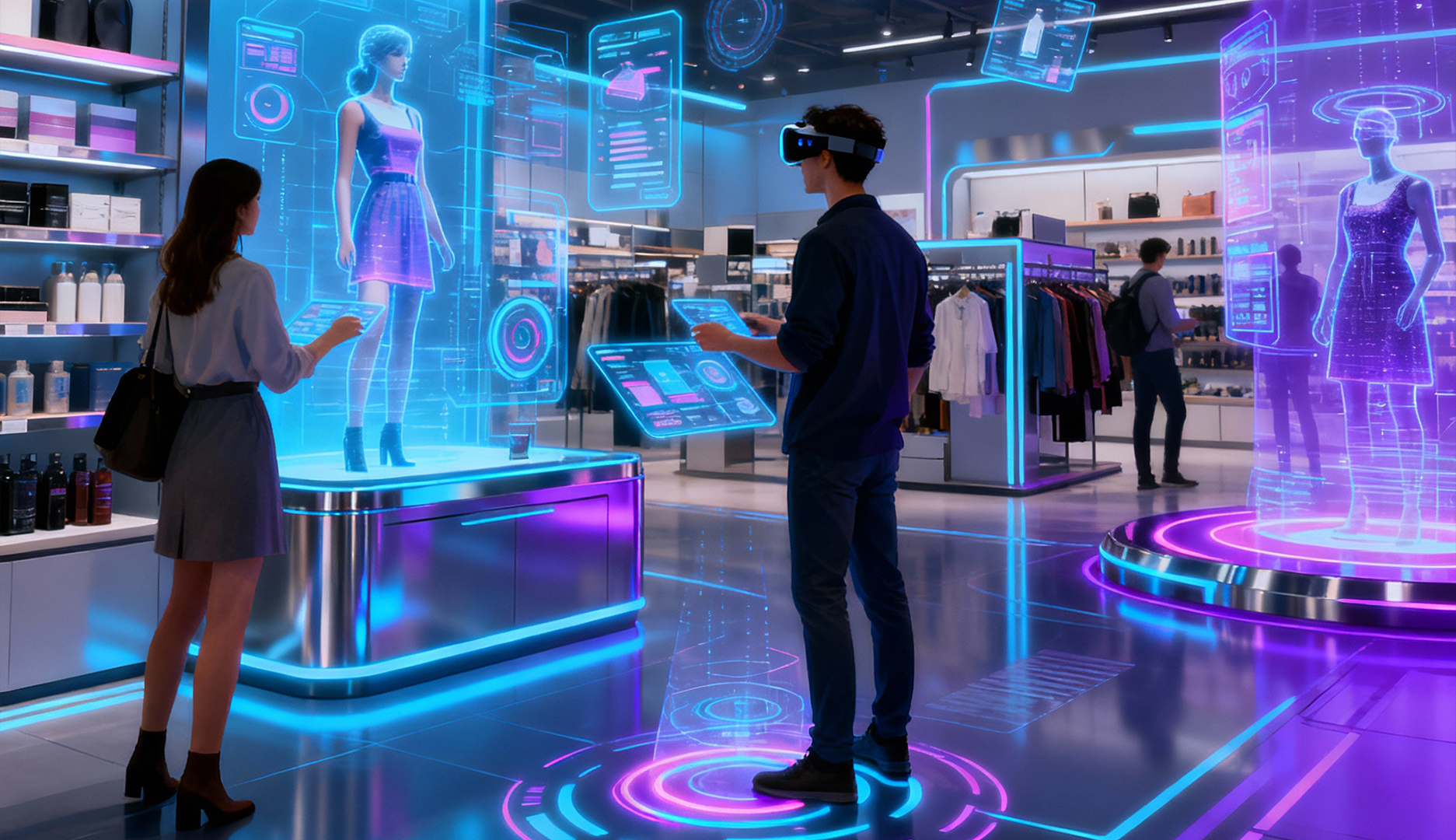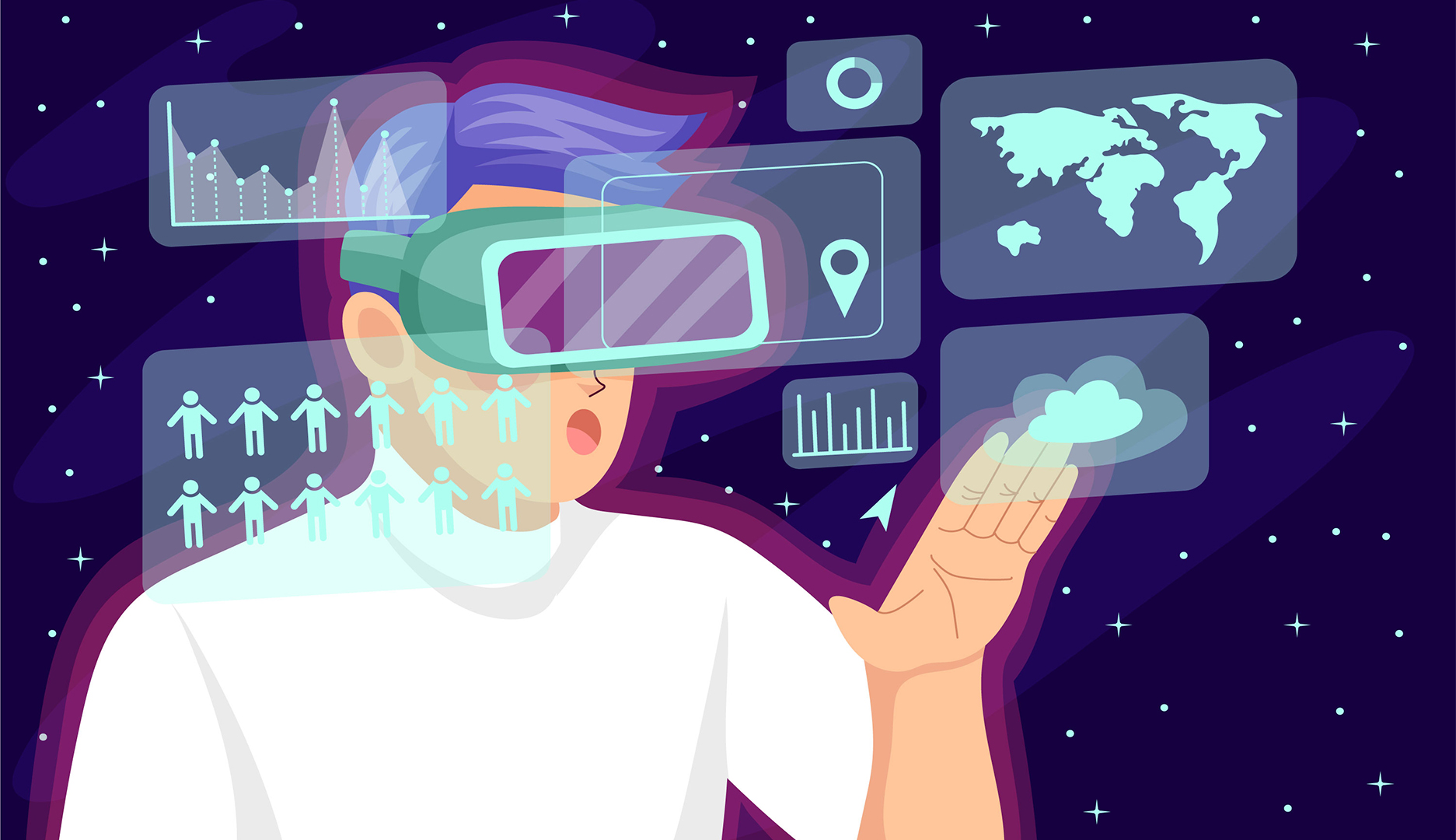In the pulsating heart of 2025’s hyper-connected economy, consumer purchasing decisions have ceased being transactions; they are symphonies of thought, feeling, and algorithm-driven prompts, with a scroll of TikTok erasing months of brand loyalty. Worldwide e-commerce purchases are estimated to reach $8.1 trillion this year, which is 15% greater than the urgency in 2024, and Gen Z and Alpha cohorts have $360 billion in disposable income, meaning, as with any brand, comprehending these choices is the key to success in the era of AI-supported personalization and Web3 micropayments.
However, in the face of economic turmoil, climate demands, and the emergence of the so-called quiet luxury minimalism, what actually makes the purchase button? Artificial scarcity algorithms enhanced by psychological urges such as FOMO (fear of missing out)? Social evidence through influencer micro-narratives? Or new technologies such as haptic feedback in AR try-ons, which de-materialize digital-physical space?
This is a deep dive into the complex aspects of consumer purchasing behavior based on the McKinsey 2025 State of the Consumer report and foresight by Ericsson into the so-called Internet of Senses. We will teach drivers of psychology, social, cultural, personal, economic, and technological, filled with language of the 2025 – think hyper-personalization through behavioral modeling, predictive, and nudge architecture within omnichannel ecosystems. Looking out to 2030, we will make projections of neuralutions in marketing and co-innovative, self-generated metaverse commerce, where decisions become immersive and bio-responsive rituals. To marketers, policymakers, and consumers, these insights help illuminate a future where purchases are not just made but are predicted, morally designed, and co-created.
With the trends around the world moving towards a more eco-friendly and eco-conscious approach to shopping, 72 percent of consumers, as Shopify trends point to, are seeking seamless omnichannel experiences, combining voice shopping with drone-delivered immediate satisfaction. These variables, in an age of data sovereignty and privacy-by-design requirements in the GDPR 2.0, are dynamically responsive, influenced by real-time social listening sentiment analysis. Buckle up, it is a journey of 2500 words that will make you computer-reading, persuading, and future-proofing transacting art.
Psychological Factors: The Cognitive and Emotional Underpinnings.

The psyche, a maze of shortcuts, biases, and dopamine circuits, is the center of each purchase, which brands use with the help of the recent developments of behavioral economics. According to the updated framework of Rasmussen University (2025), psychological factors prevail, and most decisions are based on emotional appeal rather than rational judgment. The central effect is that of the endowment effect, which is enhanced by virtual possession in AR previews: Items that have been touched in digital form by the consumer are overvalued, and cart abandonment recovery increased by 25 percent through haptic simulations. As personalization becomes the emotional core of engagement, 75% of consumers now expect brands to deliver personalized experiences, and 61% are more likely to return to a website that provides such tailored interactions, reinforcing emotional attachment and influencing repeat behavior.
Nudge theory, now charged with AI micro-ndges, indirectly influences decision-making. Amazon has worked on its one-click evolutions to ghost carts, which, using neural network evidence of user preferences, fill in automatically, preventing decision fatigue in an attention-deficit world. FOMO, which was once temporal, is designed to signal scarcity: On sites such as Depop flash, Dynamic pricing software creates badges such as Only three left, which activate loss aversion, and cause impulse purchases to spike by 40% according to Exploding Topics.
Virtuosity is perception: Multisensory branding, through visual product representations and AI-generated ambient sounds, shapes taste expectations. Additionally, 55% of food product purchases in apps like Spotify-integrated grocery lists are influenced by sonic seasoning. The pyramids of motivations changed; the needs of Maslow have been overlapped with self-actualization in the form of what he calls experiential ownership, where buyers purchase items that allow them to co-create a narrative, such as NFTs offering VIP access to the metaverse.
Resolution of cognitive dissonance helps drive post-purchase loyalty: The Patagonia chatbots, which are being used to resolve the cognitive dissonance, can be considered as ‘regret-minising’ and help consumers reduce the feeling of remorse in the age of transparency. New: Neuro-linguistic programming (NLP) of ad wording, in which sentiment-scanned words, such as unlock your untapped potential, find an archetypal echo with subconscious mind processes, according to Clootrack behavioral analytics.
Habitual procurement is influenced by education from past encounters through the reinforcement plan and variable rewards during loyalty programs, such as gamified stars in Starbucks. As mental health awareness reaches its peak in 2025, wellness-aligned nudges (e.g., pause notifications on binge-scrolling) will prevent burnout, build trust, and long-term advocacy. When used ethically, these psychological levers make the transactions appear as transformative moments.
Social Influences: The Power of Networks and Social Proof.
People are collectivists, and in the 2025 social commerce boom, which reaches 2.9 trillion, social pressures override personal self-will, as 81 percent of decisions to buy are triggered by personal recommendations. Instagram micro-influencers and Discord communities fall under the category of reference groups that use the so-called social capital arbitrage, in which aspirational affiliations lead to status-signaling purchases in the case of limited-edition Supreme drops resold by blockchain marketplaces.
The social proof takes the form of algorithmic amplification: According to the trends of the Intelligence Node, user-generated content (UGC) on TikTok receives 28% conversion rates as opposed to polished advertisements. Family and opinion leaders, such as multi-generational TikToks influencing holiday spending, and role models like eco-advocacy celebrities drive their programs to sustainable brands, which have increased by 35% YoY.
Word-of-mouth (WOM) becomes an echo chamber’s approval or disapproval, which is enhanced by AI sentiment aggregators that reappear with hyper-relevant testimonials. B2B bleed-over to B2C has the committee consensus; the decisions at the enterprise level are reflected in group chats, which block individual whims. The gender and age factors remain: The kidfluencer influence of Gen Alpha accounts for half of parental purchases, combining play-based persuasion with AR co-shop.
Opposing forces appear: “Social fatigue” gives rise to such a phenomenon as authenticity audits, which are the disclosures that allow consumers to blockchain-authenticate influencers and curb astroturfing. Future sociality? Collective bargaining localized (DAOs) or decentralized autonomous organisations to democratize buying in bulk and transform individual to community loyalty.
These networks not only have an impact, but they also coordinate, transforming individual choices into symphony votes.
Cultural and Economic Factors: Macro Forces Shaping Micro Choices.
Culture, this invisible code of rules and standards, will be intertwined with economics in the polycultural market of 2025, when subcultures like cottagecore or gorpcore will shape niche consumption worth 500 billion dollars. The dimensions of Hofstede change: In Asian high-context societies, guanxi-based gifting ecosystems are preferable, whereas self-expressive customization of self-expression through 3D-printed personalization is the primary concern of individualistic Western societies.
There is economic elasticity in place: Amid an inflation rate of 3.2%, most purchases are made through micro-transactions, value-velocity shopping, UPI, or Apple Pay Later. Additionally, 62% are interested in affordable indulgences rather than luxury, according to Shopify. Income inequalities drive the aspirational arbitrage: Low-income groups use BNPL (buy now, pay later) and status symbols, while high-income groups pursue stealth wealth through discreetly luxurious heirlooms.
The backlash to globalization is in the form of hyper-local reflection of global impacts,ika-localism, i.e., the K-beauty mixed with ayurvedic sustainability in India. Sustainability itself becomes a cultural compass 64% of global consumers expressed concern about climate change in 2023. Uncertainty in the economy increases risk aversion: the buffer-buying phenomenon hoards necessities due to predictive stock market dashboard effects that anticipate shortages.
Cultural taboos change: After the #MeToo era, cultural brands are shunned by a new culture of consumerism, characterised by empowerment and a preference for non-inclusive brands (76% boycott companies that fail to pass a diversity audit). The economic volatility of crypto creates a phenomenon of DeFi decision deferral, wherein wallet integrations briefly halt impulse purchases during bear markets.
These macro currents, cultural waves, and economic tides cleverly carve the purchase seascape and require the agility and adaptability of the brands.
Personal and Technological Factors: Individual Interfaces with Innovation.
The idiosyncrasies of personalities, age, lifecycle stage, occupation, lifestyle, etc., intertwine with tech, forming custom funnels in decisions. In 2025, the customization of pitches is based on the life stage: Millennials’ sandwich generation is obsessed with multifunctional gadgets, whereas Boomers are seeking voice-activated companion commerce through Alexa routines.
The permeation is massive in terms of technology: Omnichannel seamlessness, where physical shelves are bridged by QR scans to virtual wardrobes, affects 89% of paths to purchase. The AI hyper-personalization, based on zero-party data collected through quizzes, presents so-called serendipity engines, which increase retention rates by 30%.

Mobile ubiquity gave rise to the so-called proximity purchasing: Geofenced messages initiate so-called now-or-never deals, and 5G-powered AR overlays allow customers to place furniture in real-time using 5G-based evolutions of IKEA Place. The transparency offered by blockchain will fight the lack of trust, allowing the provision of provenance proofs on ethical sourcing to influence 65 percent of eco-conscious buyers.
Individual ethics come into conflict with tech ethics: Privacy calculus compares convenience to data sovereignty, and ZKPs, which are trust-builders, are emerging. Gig workers prefer instant payments through flexi-finance applications, which personalize economic agency, occupationally.
The highest point of techno-personal fusion is in so-called embodied cognition shopping: spending on wearables like Oura rings, with recommendations to purchase through biometric stress indicators, anticipating emotional expenditure. These are what make the global personal, transforming the mass markets into shortsighted reflections.
Emerging Trends in 2025: Ethical Consumerism and Instant Gratification.
The spirit of 2025 is ethical consumerism and speed culture, which is transforming choices during climate reckonings and logistical jumps. Sustainability is not an option: 78 percent avoid brands that lack net-zero commitments, research by McKinsey found, which contributes to regenerative buying, in which biodiversity credits offset a purchase via token carbon credits.
The culture of instant pleasure prevails: UAV deliveries and checkout in under 10 seconds with a biometric scan are gratifiers of now-ism, and half of the surveyed people will abandon a cart after more than 2 minutes. The influencer ecosystems of social shopping, which now include live-stream co-buys, generate $1.2 trillion through a combination of community and business.
Privacy-conscious products boom: Data-minimalist gadgets such as DuckDuckGo-compatible smart fridges are of interest to 62 percent of privacy-conscious people who fear surveillance capitalism. Trends in inclusivity: Adaptive sizing AI combats body-shaming, making it a more potent force to empower diverse groups.
These are the trends in 2025: the decision dialect, because of ethical velocity, and the personalization that is exceptionally watchful.
Future Prospects: 2030s Immersive, AI-Augmented Decision Ecologies.

By 2030, consumers will make purchases that are beyond cognition, and are in the realms of the internet of senses, where Ericsson projects brain-computer interfaces (BCIs) to recreate flavors or scents before buying a product. According to ConsumerLab, AI simulations, which people rely on for life-altering purchases such as homes (80% trust), will democratise foresight.
The world of metaverse commerce becomes metaversal spatial storytelling: Virtual worlds through WebXR allow embodied trials, and haptic suits capture 50% of the slashing. The co-creation ethos of Gen Alpha requires gamified loyalty, where product drops to the decentralized autonomous organization (DAO) and NFT-gated exclusives unlock the spend power of 12T.
Sustainability cries: Circular economies. Circular economies: Smart contracts enable upcycling, and minimalism promotes durable and multifunctional forever goods. The use of personality profiling of individuals based on browsing behavior becomes more personalized to AI decoding Myers-Briggs.
Affordability anchors Competitive pricing in VR bazaars, and combining VR affordability audits is a way to create equity. Neural marketing-EEG responsive advertisements will anticipate wants, but dystopia is alleviated through such ethical safeguards as consent oracles.
2030’s prospects? A symbiotic integration of human intuition and ambient intelligence, in which no one is subjected to force, but natural circumstances of the market replenish, inclusive markets.
To expand on this point: Quantum-secure blockchains will support trustless transactions, eliminating middlemen and providing a global peer-to-peer network. Biofeedback loops with Neuralink-esque implants would allow emotion serialization, serving an offer based on mood, which would pose significant privacy questions that could be solved through federated learning models.
The optimism of Gen Z, according to NIQ, transforms into Alpha-style playful pragmatism: Gamified sustainability hunts reward eco-purchases with IRL redemption badges. City contraction drives so-called micro-mobility trade, e-bikes with zero waste, hyper-local kits. Affordability becomes mutable: Universal basic income pilots combine with needs-based pricing and dynamically adjust costs.
Obstacles: Digital divides are here to stay, and the solution to this scenario is to engage in inclusive immersion through subsidized VR experiences. However, there are chances–AI ethicists creating fair nudge models will guarantee fairness. In 2030, the process of purchase will be participative: Co-architects of brand ecosystems will make decisions democratically via collective intelligence.
Conclusion: Decoding the Decision Mosaic.
The variables affecting the buying decision of consumers in 2025 are seen as a tapestry of psyche, society, and silicon, woven into sensory symphonies by 2030. Successful brands will learn how to do ethical hyper-personalization, which builds confidence in an ambient intelligence era. Transparency will give consumers control over their conscious carts. According to McKinsey, the future is on the adaptive – those harmonizing human whims with humane tech. Crack the code; fashion the future of the market.
Acowebs are the developer of the WordPress offload media plugin which allows you to offload your media to cloud storage such as Amazon s3, Cloudflare r3, Google Cloud, Digital Ocean and more. Media cloud wordpress also helps to sync your media to cloud storage in 1 click and woocommerce email customizer using which you can easily build and customize WooCommerce emails with a drag-and-drop user interface.












 Login
Login
 Cart
Cart







